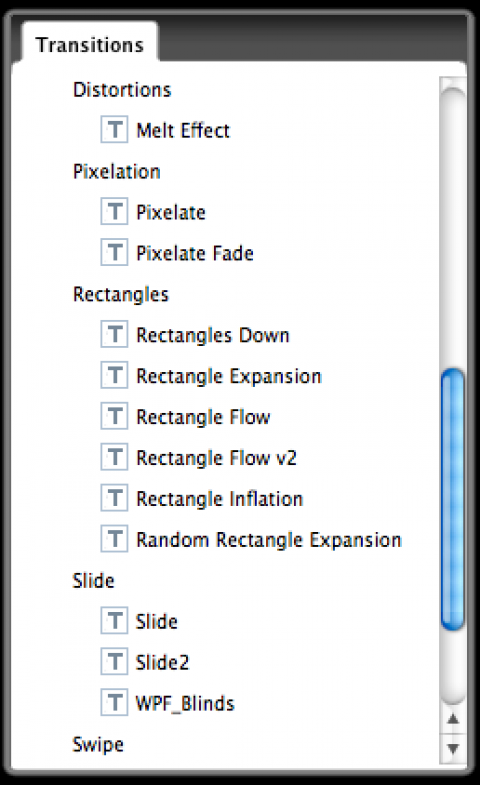A few months ago we have been asking our users to participate to a survey and rate the features they would like to see implemented in the next GrandVJ updates. Since then we have taken some time to analyze the results, define how the requested features could be implemented and prioritized depending on the users rating (as much as possible).
In the mean time we have been working on the MediaMaster 2.2 update that has just been released, with some new effects and the geometry module, and now it’s time for some GrandVJ development again..
From now on, as we are working on a major update to GrandVJ we will provide several intermediate development versions that will include a few new features, before we release the final update with all the new stuff packed in.
Working like this will allow us to receive a better feedback on each new feature while we are still in a development cycle, where bugs or problems can easily be corrected, and then release a final version that will hopefully be.. *perfect* (yes, it’s a developer’s dream..). (Read more for details and download links..)
So, here is the first step to GrandVJ 2.0.!
Besides the usual little adjustments and bug fixes, the first big new feature we’ve added is.. (drumroll).. Transitions!
Transitions are similar to effects except that they have two inputs. Just like the effects, they also have up to four parameters.
Check the video below for an example of the transitions available in GrandVJ Dev. 101214
A new “Transition” panel has been added to the left-sided browser in the application.

Transitions in Synth mode
In Synth mode, you can add a transition on every cell to bring it smoothly without the need to play with transparency. The parameter panel also receives a new “Transition” panel. These panels will let you specify the four parameters and the fade time for your transition. The default value is currently 1 second and the maximum value is 5 seconds.

Transitions in Mixer mode
In Mixer mode, the application now behaves even more like video mixer: A layers and B layers now represent two separate compositions that you can combine by using a transition effect controlled through the cross-fader.
The new “Transition” panel under the cross fader is retractable, it allows you to switch between up to ten pre-defined custom transitions.
The following screenshot show 2 different compositions (layers 1 + 2 on A & layers 4 + 5 on B) mixed together using a “Spreading Blinds” transition, while the logo on layer 8 standing on top whatever the value of the cross-fader is.

Remark:
- This is a development build, some things might not be 100% polished yet (i.e. transition icons are missing, etc..).
- You should not remove any older version of GrandVJ you have installed. You can have several versions installed on the same machine so you can test the new functionalities and still have the option to use the latest official release.
Feedback:
As usual, we welcome general constructive comments under this blog post but if you would like to provide a detailed technical feedback or bug report about this development release, please use the dedicated forum topic instead.
Download Link:
https://vj.arkaos.com/grandvj/download
Changelogs (since GrandVJ 1.2.2):
- added transitions:
- transition on a Cell [Synth mode]
- transition on the cross-fader [Mixer mode]
- increased number of banks to 32
- added the possibility to rename a bank
- changed fullscreen behavior: “Force Resolution” mode doesn’t stop when switching to another application [Windows]
- fixed crash using ASIO audio [Windows]
- fixed crash in FFMpeg audio decoding
- fixed crash when changing video input settings [Windows]
- fixed crash when quitting after using video input device [Windows]
- fixed possible user-interface redraw problem when using Display time-reference [Mac]
- fixed a problem that prevented the application to save Decklink setup filter settings properly [Windows]
- fixed a possible crash when quitting after using a Decklink card [Windows]
- fixed a bug in Machine ID / serial check at startup [Mac]
- fixed audio playback problem using latest MacBook Pro (6,2) on-board device [Mac]
- fixed problem using several identical video input devices [Windows]
- fixed osc port preference that wasn’t saved






